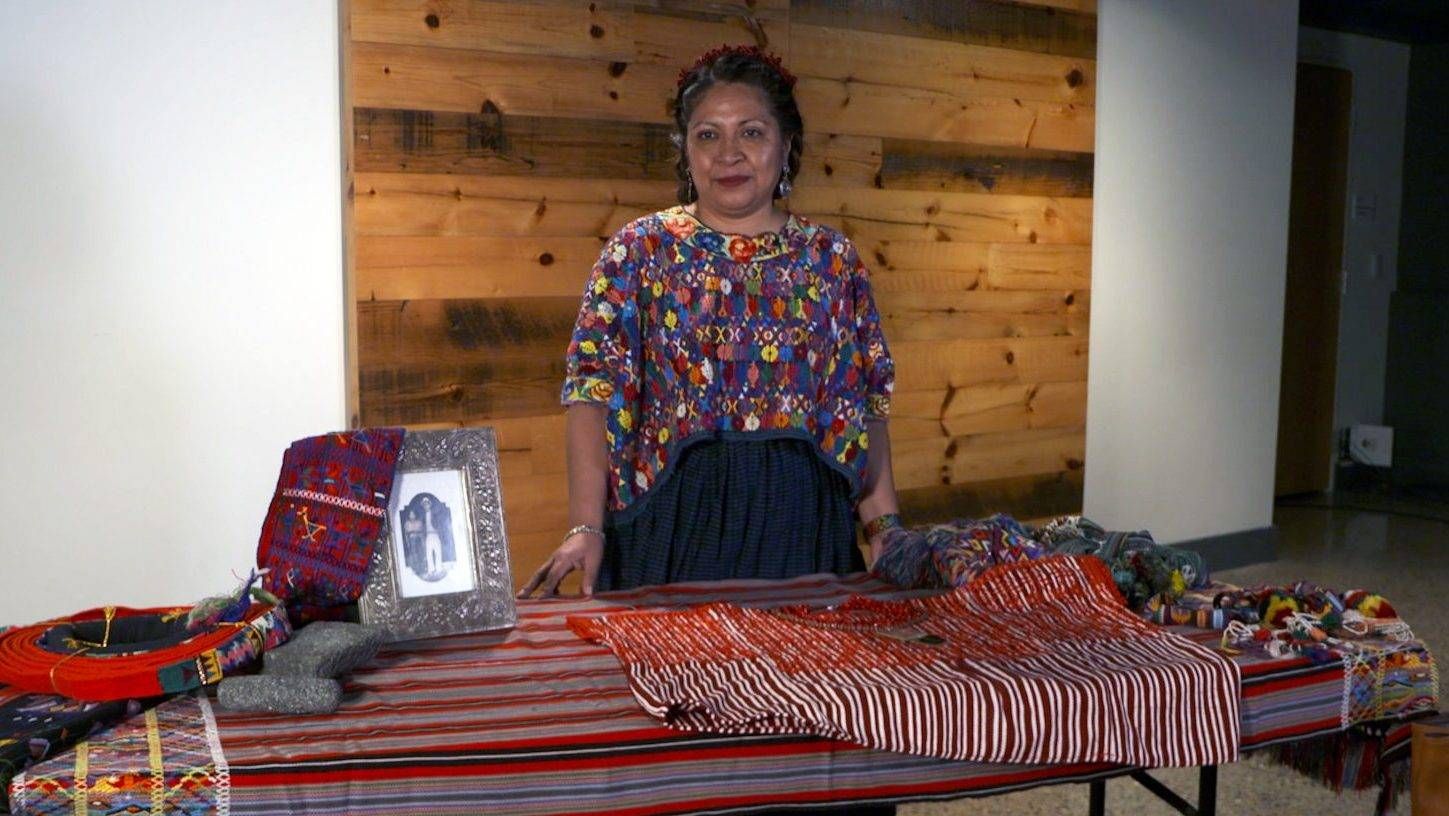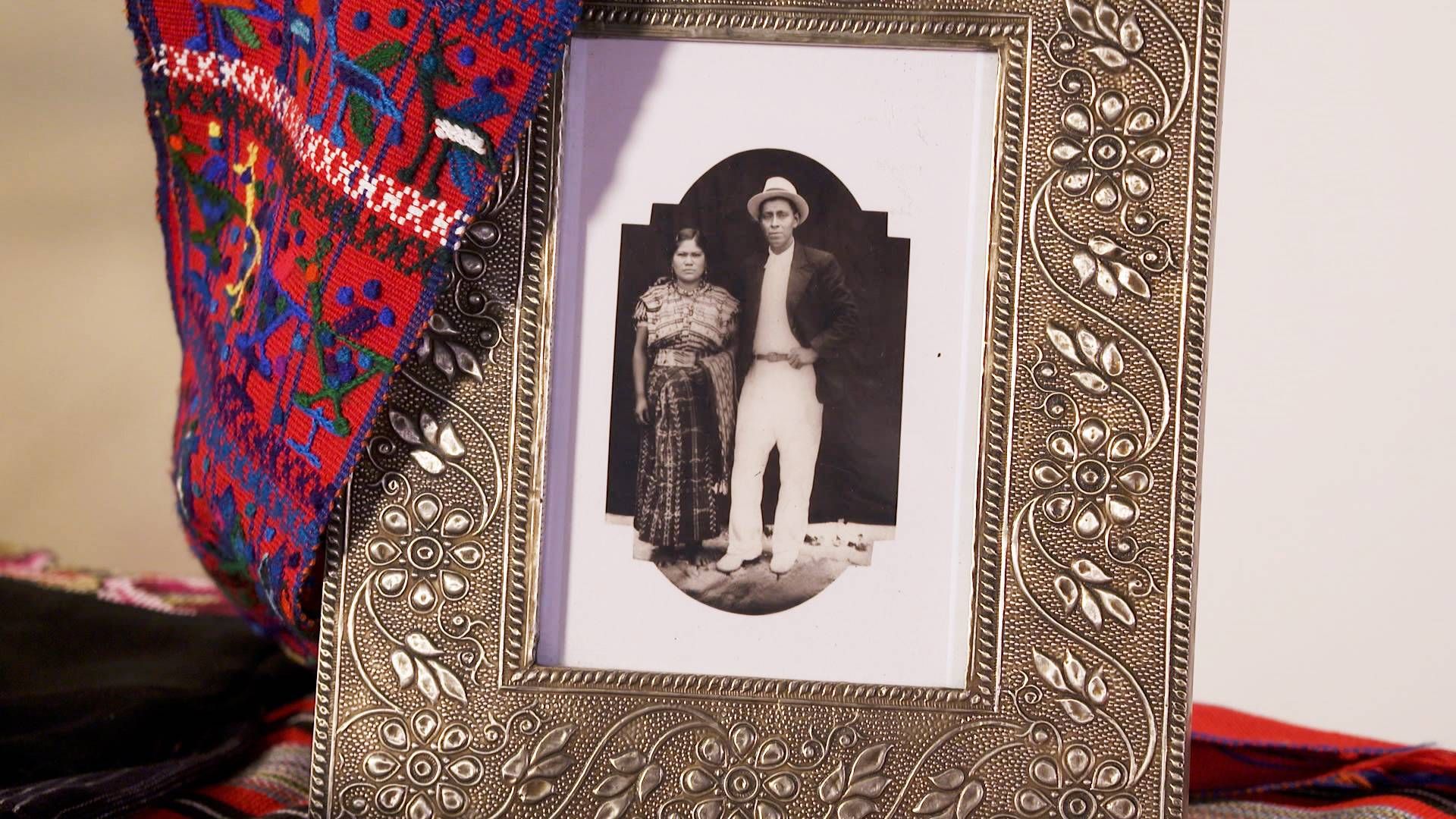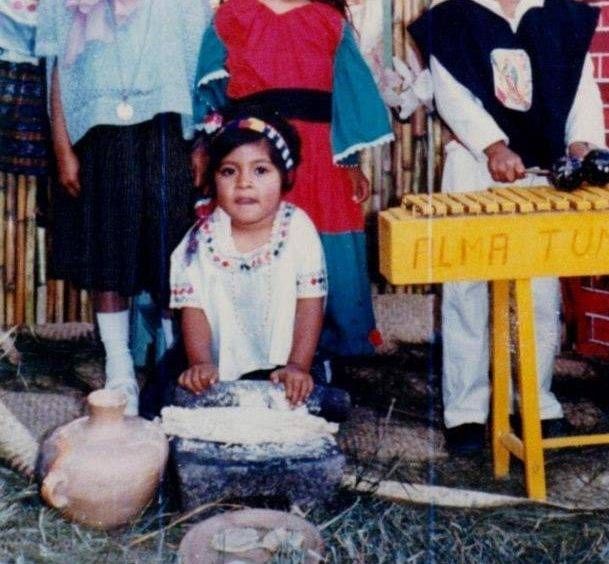Worn Within: Did Mayan weaving patterns originate in Spain?
WATCH: Many scholars credit the Spanish conquistadors for creating the different weaving patterns of the 21 indigenous Mayan groups living in Guatemala. The Mayan people say otherwise. There were already distinct differences between each group's weaving patterns long before the Spanish colonization.
The Mayan civilization occupied a territory that spanned across five present-day countries: Mexico, Guatemala, Belize, Honduras and El Salvador. About half of Guatemala's population identify as Mayan.

This is Carmen Rudin. She hails from Guatemala, and her traditional Mayan weaving patterns feature cats, and red and white threads dominate her color palette. "Every color has meaning... Red represents blood. And the blood is so sacred," she says. White can represent air, hope and promise.
I grew up visiting my grandparent’s home every summer. They lived in the town of Panajachel, located in the center of the Guatemalan highlands. It is a paradise surrounded by three volcanos, mesmerizing nature and especially Lake Atitlán, one of the most beautiful volcanic lakes in the world.
Life there was full of color, especially my abuela's clothes (I call my grandma, "abuela"). She was a Cakchiquel indigenes, a tribe descended from the ancient Mayan civilization. I remember admiring her morning ritual of getting dressed; the long faja (sash) that would hold her corte (skirt) and the fast way that she swished the faja many times around her waist, as well as the intricate designs on her huipil (blouse) that told a story of generations before her.

One of my favorites activities was to accompany my abuela to the market, where an explosion of colors would give us a welcome - fresh fruits and vegetables all piled in baskets, but especially the textiles. My abuela was not a weaver, for this is an art that is passed from mothers to daughters, but she knew the best weavers in town.
My abuela taught me how to identify people from towns in the surrounding areas by observing the clothes that they wore; this was a game that was a delight to play. I lived in Guatemala City with my parents, and people there wore regular western-style clothes.
EDITORS NOTE: "MAYA" VS "MAYAN"
Though scholars use "Maya" to refer to the people and culture, and "Mayan" in reference to language - "Mayan" is accepted by the general public and often preferred within the Mayan community.
However, as the Mayan community consists of many indigenous groups, the most accurate way to identify individuals is by their tribal name (or the language/dialect they use), such as "Cakchiquel."

Huipils are very expensive to make - it takes time, great skill and high-quality threads, especially when you want something to your particular specifications. Once I grew up and I was able to work, I had the ritual of buying a huipil for my abuela for many years. I knew that this was the best way to show her how much I loved her and that I appreciated what I learned from her during all those summers.
She is gone now, but in my heart she is in every huipil that I own. In them, I find the connection to my ancestors. My collection of approximately 40 huipils - many of which are 30 or 50 years old - are a treasure for me. I feel like the keeper of my culture, and it’s my mission to share what I know about Guatemalan textiles, thanks to my abuela, Maria Mendoza de Chay.
Production Team: Susan Thao, Carrie Clark, Eric Pagel, and Kristen Blekum
Illustrations and Graphics: Maria Ahrens and Ben Malley

This story is made possible by the Arts and Cultural Heritage Fund and the citizens of Minnesota.
James beard-nominated chef Jorge Guzman may have gotten his culinary start making nachos in the family kitchen, but his more recent interests have shifted to 5,000-year-old Mayan cuisine. Bring history to your table with this recipe for Poc Chuc.
Ever wondered about the differences between Dakota and Ojidwe beadwork? Discover the intricate nuances in this episode of Worn Within.
The bright, geometric patterns of Ankara textiles are a hallmark of West African clothing – but the tradition actually came from another part of the world. Find out more in this episode from Worn Within.
